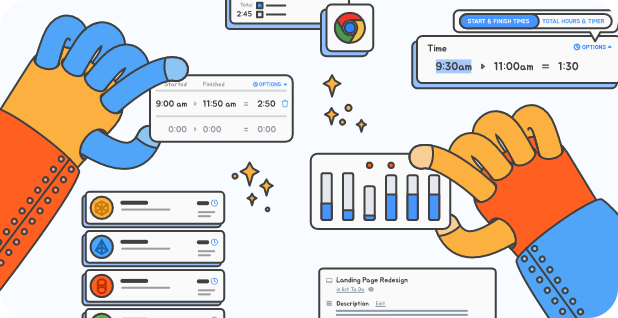How To Reduce Social Loafing
How to reduce social loafing at your workplace
Picture this: you’re in a bustling team meeting, sipping coffee and discussing ideas - yet over in the corner, Carl (we all have a “Carl”) is making a Herculean effort to blend into his chair, hoping to coast on everyone else’s hard work. Sound familiar? This all-too-common scenario is part of the social loafing phenomenon, where some folks put in less effort when they’re in a group. It’s sneaky, it’s frustrating, and it can really put the brakes on your office’s productivity train. If you’re ready to tackle this head-on and learn how to reduce social loafing before it torpedoes your next project, you’ve come to the right place.

In this article, we’ll dive into why social loafing occurs, how to identify social loafing in real-time, and the best ways to make sure everyone on your team feels motivated (and maybe even excited) to contribute equally. We’ll walk you through social loafing examples, explore strategies for upping individual accountability, and give you insider tips for nurturing a culture where nobody gets away with napping on the sidelines.
Understanding Social Loafing
Before tackling how to reduce social loafing, it is crucial to understand what it is and why it happens. Social loafing refers to the tendency of individuals to exert less effort on a task when they work in a group setting compared to when they work alone. The belief that only a few people will pick up the slack or do the bulk of the work leads some to rest on their laurels, assuming that other group members or other team members will compensate for their reduced efforts. This attitude arises in many contexts, from office teams handling a team project to committees planning company-wide events.
Although social loafing can manifest in different ways, a classic scenario involves large groups where some group members remain quiet or disengaged, while a small core of individual members invests most of the energy. When social loafing occurs, the entire group suffers from lowered productivity, weaker morale, and diminished quality of output. Some participants might even develop resentment, perceiving that they are forced to contribute more effort to compensate for those doing less effort. In essence, this disparity in engagement can severely damage team spirit and undermine the sense of unity necessary for group success.
Why Social Loafing Occurs
The root causes of social loafing behavior often involve psychological and structural factors that discourage accountability. One of the most common reasons is the diffusion of responsibility in a group environment. When working on a group project, if roles and responsibilities are vague, people may feel disconnected from the final outcome or believe their own efforts are insignificant. This devaluation of individual contributions can prompt some to unconsciously scale back their participation.
Additionally, the group size itself can play a critical role: in large groups, it becomes easier to hide mediocre or minimal participation. When tasks are not distributed as individual tasks or clearly labeled with an individual effort requirement, it sets the stage for ambiguous expectations. This ambiguity fosters the impression that one’s personal shortfall might go unnoticed, because only a few people are likely to be singled out as bearing the main burden. Without clarity, deadlines, accountability, and a sense that everyone must contribute equally, social loafers can slip under the radar.
Consequences of Social Loafing in the Office
When social loafing occurs in a professional environment, the immediate effects are fairly obvious: deadlines may be missed, the group output may be subpar, and tensions rise within the team. Beyond these immediate impacts, there are long-term repercussions. Team members feel discouraged and unappreciated if they perceive that leadership has allowed social loafers to coast with impunity. Over time, the consistent contributors may themselves start to lose motivation—why give 110% if it goes unrecognized while slackers skate by?
This dynamic not only hampers group success but also fosters resentment and conflict. In the worst-case scenario, team members who do the lion’s share of work could burn out, leave the team, or demand to work independently to avoid further frustration. Culture-wise, social loafing phenomenon damages team spirit, a crucial intangible that makes the difference between a flourishing, innovative workplace and a stagnant one plagued by interpersonal tension. Maintaining a culture of excellence hinges on preventing or mitigating these issues.
Recognizing and Identifying Social Loafing
To effectively identify social loafing, one must pay close attention to the team’s working patterns, progress, and morale. Red flags might include:
- Unequal workloads: Some group members are consistently picking up tasks, while certain individuals remain passive or rarely offer help.
- Unclear responsibilities: If individual tasks are not explicitly assigned, people may not realize which duties they are accountable for.
- Minimal engagement: In meetings or brainstorming sessions, a few voices dominate while others remain silent, contributing little.
- Delayed deliverables: Work lags despite no apparent obstacles, possibly indicating that certain people are not investing more effort and leaving tasks unfinished.
Keeping track of these warning signs can help leadership identify social loafing early and intervene before severe damage is done. By understanding who is falling behind and who is overcompensating, managers or a team leader can rebalance workloads, establish accountability standards, and maintain harmony.
Social Loafing Examples in the Workplace
Here are a few social loafing examples to illustrate typical scenarios in an ofice:
- Marketing presentation team: A manager assigns a team of five to create a new campaign proposal. Two employees take the initiative and develop most of the ideas and slides, while the other three drift through the project, agreeing with proposals but rarely initiating tasks.
- Product development committee: Ten colleagues are brainstorming for the company’s next product feature. Because the group is quite large, only a few people ever speak up. The rest listen passively, assuming the vocal few will supply every new idea.
- Event planning group: The entire department is responsible for organizing a charity gala. While some employees handle vendor negotiations and budgets, a few others show up at the last minute offering minimal assistance. They know the event is too important to fail, so the proactive co-workers will do it all.
In each case, the presence of social loafers (people doing less effort) creates friction within the teams, fosters resentment, and reduces overall output quality.
Strategies on How to Reduce Social Loafing
Achieving and maintaining a cohesive, high-performing team requires concrete action. When managers, team leaders, and coworkers understand how to reduce social loafing, they can implement targeted tactics that yield lasting positive effects. Below are various approaches to address the issue.
1. Establish clear roles and individual accountability
One of the best ways to reward individual contributions and maintain focus is to assign specific individual tasks rather than vague group objectives. Clarifying each member’s responsibilities creates a direct line between their own efforts and the final result, making it more difficult for participants to coast or hide. This clarity fosters individual accountability, which is often missing when tasks are too broad or collectively assigned. If each role is explicit, each person knows how they will be evaluated and what they owe the team.
2. Set measurable goals and provide regular feedback
Teams should have measurable milestones throughout the life cycle of a team project or any major task. Goals—both group-based and individual—should be documented and measurable. For instance, you might assign a target of writing a set number of marketing materials, completing a prototype by a certain date, or securing three new vendor partnerships. Regular check-ins and progress reports can help identify social loafing early, as you’ll quickly notice who is or isn’t meeting their deliverables. These periodic reviews also give motivated team members a chance to provide constructive feedback to other group members and keep everyone’s morale up.
3. Encourage team spirit and build trust
A positive work culture can drastically reduce the likelihood of social loafing behavior. By celebrating achievements, fostering trust, and promoting open communication, you develop a sense of shared responsibility. When team members feel valued and connected, they become more inclined to put forth more effort. Simple gestures like acknowledging hard work in public forums, offering small rewards, or creating avenues for open dialogue can reinforce loyalty and dedication. Moreover, when you encourage team members to share ideas and provide mutual support, the environment becomes fertile for collaboration rather than competition.
4. Keep group size manageable
Although collaboration can be beneficial, large groups are often breeding grounds for social loafers. To solve this, try to keep teams to a manageable group size where everyone’s contributions are visible and it’s harder for anyone to slip by unnoticed. If the project absolutely requires multiple collaborators, break the task into smaller sub-teams with well-defined objectives. The more intimate a group setting is, the more individuals feel obliged to add real value, knowing their performance is more likely to stand out.
5. Adopt peer evaluations and 360° feedback
Peer reviews allow colleagues to rate each other’s performance. This method highlights individual contributions and fosters individual accountability because each team member knows their teammates will be assessing their involvement. Offering constructive feedback and suggestions can significantly reduce social loafing by making it clear that underperformance will be recognized by peers, not just by the manager or team leader. As a result, everyone is motivated to show tangible involvement.
6. Reward individual contributions while recognizing team efforts
To reward individual contributions effectively, you need a balanced approach that doesn’t harm team spirit. While group awards are excellent for boosting unity, they can inadvertently encourage social loafers if there’s no mechanism to differentiate those who truly excel. Establishing a reward system that acknowledges both team achievements and standout performance helps ensure those who go the extra mile are recognized. You might integrate merit-based bonuses, public recognition in team meetings, or professional growth opportunities (e.g., leading a future team project) to highlight top contributors.
7. Provide sufficient training and resources
Sometimes, social loafing happens because team members don’t fully understand their tasks or they lack the right skill set to excel. If you want to eliminate the excuse for minimal involvement, offer comprehensive training or mentorship programs. When employees feel adequately equipped to handle their responsibilities, they become less likely to shirk them. Additionally, check whether workload distribution is fair and that every individual has the necessary tools to excel. If someone is lagging, see if it’s due to a skill gap or resource shortage, and address that proactively.
8. Cultivate open communication
Teams often experience social loafing behavior when communication channels are weak. Regular team meetings, progress updates, and brainstorming sessions can keep people connected to the shared goal. Encouraging open communication allows team members to voice challenges, request help, and clarify misunderstandings that otherwise might cause them to stall or withdraw from the team. A direct correlation exists between strong communication practices and each member’s willingness to maintain high individual effort.
The Role of the Team Leader
A strong team leader is pivotal in mitigating social loafing phenomenon. Leaders have the authority to set expectations, monitor performance, and hold individuals accountable. By placing an emphasis on transparency, a leader can eradicate the sense that anyone is anonymously slacking off. They can also assign tasks strategically, pairing individuals with complementary strengths or overseeing sub-teams if the overall group size is large.
A team leader should also serve as a role model by consistently demonstrating commitment, respect, and cooperation. Leading by example helps create an environment where other team members emulate proactive behavior. Meanwhile, by intervening when social loafers threaten overall performance, the leader signals that subpar engagement is unacceptable. This direct action protects team morale and ensures the entire group remains goal-oriented.
Fostering Individual Accountability in a Team Context
Striking a balance between collaboration and individual accountability is essential to eliminating social loafing. In a healthy, high-functioning environment, each individual’s input is vital to collective outcomes. Encouraging a sense of ownership—where each participant understands that their work matters—reminds people of the significance of their own efforts. When participants realize that their performance will be measured and recognized, they become more invested and less likely to slack off.
This balance extends beyond formal structures like performance reviews and progress reports. Building a culture that values direct, respectful communication helps reduce miscommunication about responsibilities and fosters alignment. If group members clearly see how their individual tasks fit into broader objectives, they’ll be more personally invested in generating a positive group output.
Creating a Supportive Group Environment
A supportive group environment is one in which everyone feels comfortable asking for help, sharing ideas, and giving feedback. Typically, social loafing emerges in offices where employees are disengaged, disillusioned, or lacking faith in the leadership or the project. A supportive workplace, on the other hand, encourages mutual assistance and shared victories. When the environment is one of respect and empathy, team members will feel less threatened about voicing their concerns.
It’s also crucial to ensure that every team project has a clearly defined purpose and real value. People are more inclined to work diligently when they understand the project’s importance to the organization or community. By reinforcing why each person’s piece of the puzzle matters to the final product, leaders can combat the sense that “someone else will do it.”
Handling Social Loafers Constructively
At times, even the best-prepared teams face the issue of social loafers. Leaders must approach these situations with tact and fairness to avoid blowback on the rest of the team. Start by having a private conversation with the individual, clarifying expectations and exploring reasons behind their lack of involvement. Addressing the matter promptly can prevent resentment from festering within the group.
If improvement does not follow, adjust responsibilities or reassign them to a better-suited role if a mismatch is evident. If underperformance is purely due to less effort, explain possible repercussions for continued slacking. This transparent approach ensures the individual knows their actions are being monitored and will ultimately hold them accountable. Such direct conversations, though sometimes uncomfortable, are crucial for preserving productivity, morale, and group success.
Leveraging Technology to Combat Social Loafing
Today’s digital tools can help reduce social loafing by making contributions visible and trackable. Project management software, for instance, can document tasks, deadlines, and progress updates so that everyone’s input is transparent. This level of visibility makes it harder for someone to hide behind group achievements and ensures credit is fairly distributed.
Communication platforms—like instant messaging or collaborative file-sharing systems—also facilitate real-time collaboration, ensuring that any looming issues or delays are flagged early. By supporting structured collaboration, technology encourages each individual to own specific aspects of a project. Over time, consistent usage of these tools cultivates a culture where rewarding individual contributions is the norm because visible proof of everyone’s hard work is readily available.















